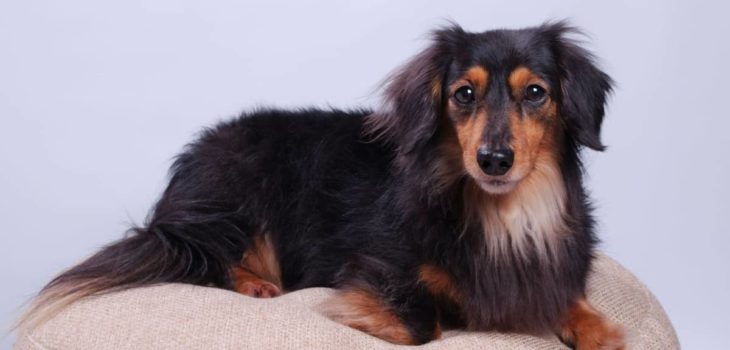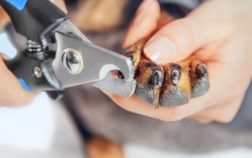There are many gorgeous dachshund colors with long-haired Doxies being especially pretty. So, let’s look at some long haired multi colored dachshund dogs and their unique beauty. We’ll go over which color patterns are unique to long-haired Doxies, who aren’t specific to them but look especially good on them, which are the rarest ones, and more questions below.
Are There Many Long Haired Multi Colored Dachshund Dogs?
Doxies of all coat lengths can come in single-color, bi-color, and tri-color varieties. We’ve outlined the 20 most commonly recognized by kennel clubs dachshund colors here but there can be even more sub-types when you consider certain crossbreeds. Most of these color variations are colors are typical for all coat lengths with some of the most common being black and tan, red, black and cream, chocolate and tan, and a few others.
Long-haired multi-colored dachshunds can come in various other combinations too, however. Sable long-haired dachshunds are a particularly gorgeous type as the long and wavy hair of these dogs looks stunning when the colors of each hair strand are flowing from one color into another.

Learn more about: How To Tell If A Dachshund Puppy Is Long Haired?
Which Patterns Are Unique To Long Haired Multi Colored Dachshund Dogs?
Almost all dachshund colors and patterns are represented in three standard Doxie coat types – smooth (short) haired, long-haired, and wire-haired. There are very few exceptions such as the Wild boar wire-haired Doxie. How about exclusive long-haired multi-colored dachshund types, however?
The two main examples of long-haired-only colors we can think of are sable and English cream. Both are pretty rare, absolutely beautiful, and can appear only in long-haired dachshunds. The cream color itself isn’t a multi-colored pattern, however – it’s a solid-color cream dachshund. Different types of cream (non-English creams) can come with shading or a sable-style pattern, giving them a multi-colored look.
Which Are The Rarest Long Haired Multi Colored Dachshund Types?
Sable is definitely a pretty rare coat color but it’s not the most rare one. The blue and tan combination is even rare as are brindle piebald, fawn, as well as dapple and double dapple dachshunds (beware with the latter as there is an increased risk of blindness). Certain solid-color variants are also quite rare such as chocolate, albino, and full-black.
Are Long Haired Multi Colored Dachshund Dogs More Expensive?
Depending on the rarity, some color patterns are more expensive than others. There isn’t a direct correlation between whether a dachshund is multi-colored or not and how rare it is or how much it costs. Some long-haired multi-colored dachshund variants are indeed pretty rare – the sable dachshunds, brindle piebalds, and blue and tan Doxies, for example. Many single-color long-haired dachshunds are also pretty rare too, however, such as chocolate and black ones.
The rarest coat types can cost well into the 4-digit price ranges whereas the more common color patterns can be found easily in the low hundreds.
FAQs
[rank_math_rich_snippet id=”s-4bfdb484-851f-4984-938d-26f5c3f8c94b”]




